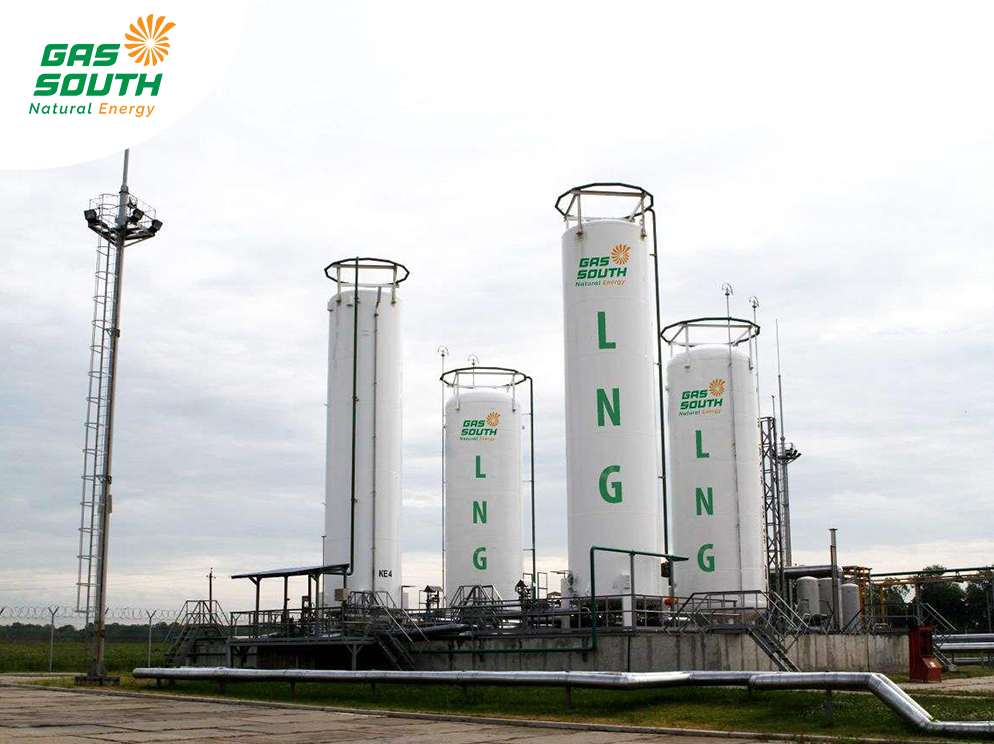Liquefied Natural Gas (LNG) is widely used in various sectors, particularly as a replacement for dry natural gas to meet the gas demands of power plants. In many countries, coal, oil, and natural gas are the three common fossil fuels used for electricity generation. Among them, LNG power generation is an expected energy source that helps reduce carbon emissions, thereby minimizing negative impacts on the environment and the atmosphere. LNG power generation also offers the advantage of flexibility and ensures a continuous supply, unaffected by weather conditions. Let's delve deeper into what LNG power generation is and the current development of LNG power generation in Viet Nam market.
1. Something about LNG power generation
Liquefied natural gas (LNG) has become an increasingly important fuel in economic and social development. Particularly, using natural gas for power generation is seen as a solution to develop energy while protecting the environment. To understand what LNG power generation is, it is essential to first understand LNG and the process of utilizing this gas for electricity generation.

Development of LNG Power Generation in Viet Nam
1.1. What is LNG power generation?
Liquefied natural gas (LNG) is natural gas with the main composition of CH4 - methane (accounting for about 95%). LNG has been cooled to -162oC and converted to a liquid state, allowing for much higher storage capacity compared to compressed natural gas (CNG), making it convenient for storage and transportation. At the consumption location, LNG is regasified back into gaseous form and used similarly to other fuels, serving electricity consumption, industrial, urban, residential, and other purposes.
In the development of LNG power generation, liquefied natural gas is used as a substitute for diesel fuel used in power generator engines. Specifically, diesel-fueled power generators can be converted to operate on dual-fuel.
1.2. The benefits of LNG power generation development
The development of LNG power generation brings numerous benefits, including:
-
LNG power generation emits about 45% less carbon compared to coal-fired power plants and about 30% less than oil-fired power plants. It also significantly reduces up to 90% of NOx emissions, contributing to environmental protection and lower air pollution.
-
LNG provides a flexible and continuous power supply that is not dependent on weather conditions like wind or solar power.
-
LNG has a higher energy value, allowing it to generate more electricity per ton of gas compared to coal.
-
Natural gas is abundant and widely available, produced, and sold in many countries, so it is easy to access the supply.
-
LNG ensures a stable and long-term fuel supply for power generation, replacing other fossil fuels that are entering a phase of decline.
2. Development of LNG power generation in Vietnam
Recognizing the importance of developing energy in conjunction with environmental protection, many countries around the world, including Vietnam, are continuously focusing on selecting and utilizing clean, sustainable, and less environmentally polluting energy sources. The use of LNG in the power generation sector helps ensure a diversified primary energy supply for electricity production, reducing reliance on coal-fired power plants and enhancing environmental protection, aligning with the trend of sustainable development.

In Vietnam, Resolution No. 55/NQ-TW of the Politburo on February 11, 2020, regarding the national energy development strategic direction of Vietnam until 2030, with a vision to 2045, sets out the tasks for developing the gas industry, stating "Priority should be given to investing in technical infrastructure to serve LNG imports and consumption" and emphasizing "The fast development of gas-fired power plants using LNG, gradually making gas-fired electricity an important power source to support the regulation of the system." Additionally, the draft of the Power Development Plan 8 clearly outlines the development perspective, aiming to minimize coal-fired power plants to reduce CO2 emissions. It discourages the establishment of new coal-fired power plants and considers converting some power sources from coal to LNG.
Currently, the initial phase of building the infrastructure for LNG import, export, and business operations has been completed, with the Thi Vai LNG Terminal Project ready to be operational in 2023. Additionally, several LNG power plant projects have received investment approval and are in the planning and implementation stages. Notably, the Nhon Trach 3 & Nhon Trach 4 LNG power plant projects, with a total capacity of approximately 1500MW, have been signed and are preparing for construction.

See more: What are the differences between liquified natural gas vs natural gas?
The development of LNG power generation enhances efficiency in electricity production, reduces reliance on coal-fired power plants, decreases emissions, protects the environment, and aligns with the nation's sustainable development goals. However, the plan to produce electricity from LNG in Vietnam is entirely dependent on the importation of LNG from other countries, coupled with fluctuations in LNG prices in recent years, posing challenges to domestic LNG power development projects.
Gas South is currently one of the leading LPG and CNG businesses and a forerunner in the distribution of LNG in Vietnam. The company is actively preparing to embrace the upcoming imports of LNG.





